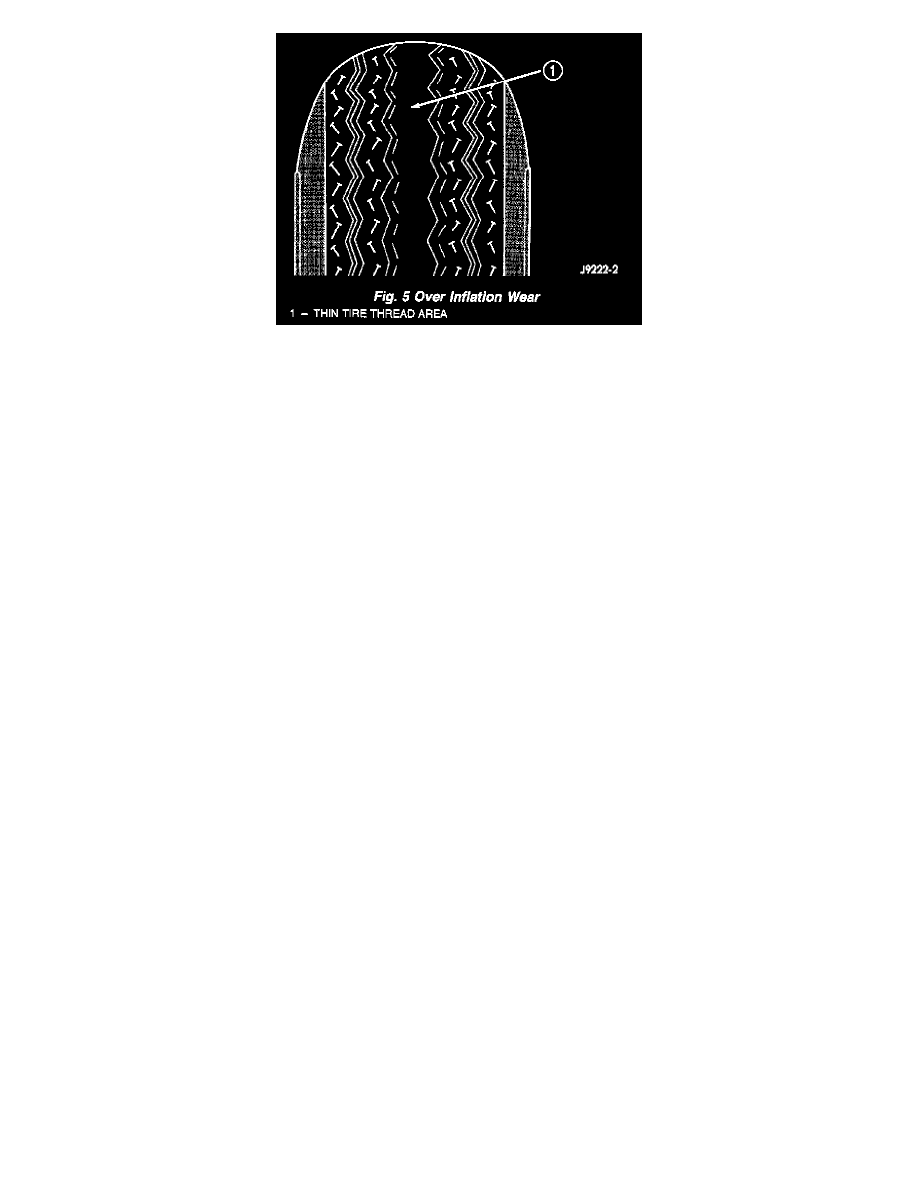Durango 2WD V8-5.9L VIN Z LDC (2000)

Fig. 5
Over inflation will cause rapid center wear and loss of the tire's ability to cushion shocks.
Improper inflation can cause:
-
Uneven wear patterns
-
Reduced tread life
-
Reduced fuel economy
-
Unsatisfactory ride
-
Vehicle drift
For proper tire pressure specification refer to the Tire Inflation Pressure Chart provided with the vehicles Owners Manual. A Certification Label on
the drivers side door pillar provides the minimum tire and rim size for the vehicle. The label also list the cold inflation pressure for these tires at full
load operation.
Tire pressures have been chosen to provide safe operation, vehicle stability, and a smooth ride. Tire pressure should be checked cold once a month.
Tire pressure decreases as the ambient temperature drops. Check tire pressure frequently when ambient temperature varies widely.
Tire inflation pressures are cold inflation pressure. The vehicle must sit for at least 3 hours to obtain the correct cold inflation pressure reading, or be
driven less than one mile after sitting for 3 hours. Tire inflation pressures may increase from 2 to 6 pounds per square inch (psi) during operation. Do
not reduce this normal pressure build-up.
WARNING: OVER OR UNDER INFLATED TIRES CAN AFFECT VEHICLE HANDLING AND TREAD WEAR. THIS MAY CAUSE
THE TIRE TO FAIL SUDDENLY, RESULTING IN LOSS OF VEHICLE CONTROL.
Tire Pressure-High Speed Operation
DESCRIPTION
Where speed limits allow the vehicle to be driven at high speeds, correct tire inflation pressure is very important. For speeds up to and including 120
km/h (75 mph), tires must be inflated to the pressures shown on the tire placard. For continuous speeds in excess of 120 km/h (75 mph), tires must
be inflated to the maximum pressure specified on the tire sidewall.
Vehicles loaded to the maximum capacity should not be driven at continuous speeds above 75 mph (120 km/h).
For emergency vehicles that are driven at speeds over 90 mph (144 km/h), special high speed tires must be used. Consult tire manufacturer for correct
inflation pressure recommendations.
Spare Tire - Temporary
DESCRIPTION
The temporary spare tire is designed for emergency use only. The original tire should be repaired or replaced at the first opportunity, then reinstalled.
Do not exceed speeds of 50 MPH when using the temporary spare tire. Refer to Owner's Manual for complete details.
